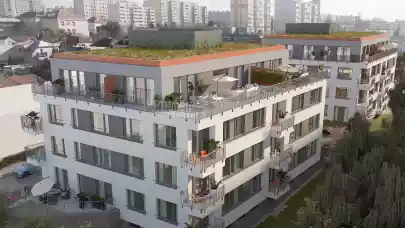
Recent data from Arnold Investments show that around €152 billion was transacted on the EU real estate investment markets in the first three quarters of 2022. Year-on-year, this represents a decline of around 4% due to a strong first quarter. However, investment activity slowed down sharply in the course of the year. At roughly 39 billion, the transaction volume for the third quarter was around 39% lower than in the previous year. The main EU investment markets analyzed show a significant decline in transaction volumes both over the course of the year and in the third quarter.
In the first three quarters of 2022, the transaction volume of the European Union’s largest real estate investment market, Germany declined by around 14% compared to last year. At approximately €11.6 billion, the investment volume in the third quarter was 34% lower than in the same quarter of the previous year.
Despite the difficult market environment, the Southern European and the CEE investment markets performed particularly well in 2022. However, even in these markets, except Spain, a year-on-year decline has already been registered in Q3 2022.
Compared to the historically outstanding previous year, investment markets in the mid- to high-volume residential segment were under pressure. In Q3 2022, just around €8.6 billion were invested in EU residential properties, reflecting a 32% decline compared to last year.
The average prime yield for residential properties across the top 10 EU markets analyzed has increased by around 30 basis points since the historic low in Q1 2022 to 3.23% in Q3. The strongest adjustments in yield levels were recorded in Amsterdam. Here, however, challenging market conditions are currently being compounded by a further tightening of general rent regulations.
By contrast, the market for alternative residential investments (student residences, nursing homes, retirement living) showed a very stable activity with an investment volume of 8.7 billion from Q1 to Q3 2022. In the third quarter, a large-volume portfolio deal comprising ten student housing properties in Denmark, Germany, Sweden, and Poland dominated the sector. Based on long-term positive fundamentals such as the ongoing demographic change as well as the advantage of a high public financing rate in the healthcare sector, nursing homes show the lowest yield increase of all asset classes with an average of +9 bps.
Offices were again by far the strongest asset class in the EU investment market from Q1 to Q3 2022. Overall, the demand situation for office space as well as the rental development in most EU markets were very positive. However, the subdued macroeconomic expectations and the rapidly changing interest rate environment also lead to an increase in prime yields for office properties. The average prime yield of the 12 most important EU markets analyzed increased by around 38 bps to 3.66% from Q1 to Q3 2022. The smallest increase was recorded in Milan at +25 bps, the highest in Amsterdam at +50 bps. However, it should be noted that Northern and Western European markets typically react faster and therefore earlier to market changes.
As already triggered by the pandemic in 2020, the EU hotel investment markets, which have just been recovering, struggled again with significantly declining investment volumes in 2022. Average prime yields for hotels with lease contracts in the major 12 analyzed EU investment markets increased by about 22 bps to 4.95% in Q3 2022. Overall, the Southern European hotel investment markets are benefiting from increased investor interest in vacation and leisure hotels, while the markets in Western and Northern Europe, dominated by city and business hotels, are recording stronger declines,



